Quick Disclaimer: This post may be a little unhinged because of all the books I’ve read thus far, this one pissed me off the most.
Let me say it again: if a teacher or administrator claims this is about representation or educating children about different kinds of people, they’re lying to you. The more I read, the angrier I get, and the next book on our list has me fuming.
Ian and Sarah Hoffman are baffled that their innocent and thoughtful children’s book, Jacob’s Room to Choose, would be named in a lawsuit against the Montgomery County School District. In an op-ed for TIME, they stated, “We believe that people have a fundamental right to practice and express their faith, but not when it harms others. Allowing families to opt their children out of reading our books hurts the children whose lives and families are reflected in those books. ‘Opt-out’ policies starkly communicate to classrooms of children that behaving decently to all human beings is optional and tell kids who are different that they and their families don’t merit the respect of all their classmates.”
When asked how they feel about their book's media representation, they said, “When we see how our book is represented in the media, it’s clear to us the people objecting to it haven’t actually read it.”
I’ve read it. Let me tell you about it.
This all began with their son, Sam, whom they refer to as a “pink boy” (the male equivalent of a tomboy). Sam enjoys wearing dresses and has long hair. He likes art, make-believe, ballet—what they call “traditional girl things”—as well as “traditional boy things” like castles and dinosaurs. According to the Hoffmans, this makes Sam gender-nonconforming. When he was six, Sam was assaulted in the bathroom because the boys mistook him, with his long hair and pink Crocs, for a girl. From his experience, they wrote this book.
Jacob is a boy who wears dresses, and his friend Sophie is a girl who wears boys’ clothes. While in the library, their teacher, Ms. Reeves, asks if anyone needs to use the bathroom before they head back to class. Sophie and Jacob raise their hands. Before entering their respective bathrooms, Sophie asks Jacob, “Do you think it’s OK?”, making it clear Sophie and Jacob have had issues with the bathroom in the past. Jacob walks in and immediately notices boys already using the bathroom, and they look at him. Jacob “knew what that look meant,” and he runs out. He tells Sophie, who had a similar experience, that he was chased out of the bathroom. After telling Ms. Reeves what had happened, Ms. Reeves walks both Jacob and Sophie into the girls’ bathroom and waits outside for them to finish. Later, Ms. Reeves decides to turn the incident into a teaching moment. She draws a boy wearing boys’ clothes and a girl wearing girls’ clothes on the whiteboard. She asks her students which one is a boy and which is a girl, and how they know. The children give obvious, childlike responses, like “The girl has long hair,” and “she’s wearing a dress.” She tells the children, “Now I want each of you to stand near the picture that looks like you.” Noah, a boy, goes to stand next to the drawing, but Ms. Reeves stops him and says, “Noah, you have long hair. That sign shows short hair.” She then directs her attention to a girl named Emily, who is standing near the girl drawing, and says, “You’re wearing pants, but the person in that sign is wearing a dress.” Ms. Reeves suggests that she and Noah switch places. “I don’t want to stand there,” Emily says. Ms. Reeves asks why not, and Emily replies, “Because I’m a girl.” Ms. Reeves notes that not everyone looks exactly like the pictures on the board and instructs them to, “look at the person next to you and help them stand next to people who look like them.”
This image might look familiar to you. We’ll talk about it later.
Ms. Reeves guides her students in creating new signs for the bathroom, covering up the original “boy” and “girl” bathroom signs.
It would be one thing if this were about a boy and a dress and how he’s mistreated in the bathroom. They could have easily made this a book about boys for boys, focusing on how boys should be kind to each other, especially in vulnerable and private spaces like the bathroom. They could have taught a valuable (and universally understood) lesson about how boys and girls can wear whatever they want, and that there’s no one way to be a boy or a girl. But that’s not how this ideology works. The Hoffmans don’t want to find a solution; they want to disrupt society, and they’re using children to do it.
On the inside book jacket, it says, “Jacob’s Room to Choose is an empowering book that encourages change to open (bathroom) doors everywhere and create safe spaces for all kids.
“Open access bathrooms” refers to gender-neutral bathrooms, but as shown in the book, the Hoffmans aren’t advocating for gender-neutral bathrooms alongside same-sex bathrooms. This book encourages children to eliminate single-sex bathrooms, effectively breaking down boundaries even if it harms them.
It makes perfect sense why parents would object to this book being in a classroom or read to their children, because what self-respecting parent of a daughter would be okay with their little girl sharing a bathroom with a boy? Furthermore, what parent would be comfortable with their child’s teacher dismantling common-sense boundaries between boys and girls? The purpose of this book isn’t positive representation; it’s political action. Jacob’s Room to Choose is propaganda for a movement that views biological sex as a barrier that needs tearing down, and the authors want to use children to do it.
The problem with this book isn’t Jacob or his dress. The problem is that the teacher is intentionally confusing her students. When she asks them to stand near the picture that looks like them, the kids naturally divide themselves by biological sex. She could have stopped the lesson right then and given Jacob’s male classmates a lesson about kindness. Instead, she introduces deception and confusion into the conversation and makes it about femininity and masculinity, implying they can’t tell whether someone is a boy or a girl. You might say, “Savannah, you’re reading too much into it!”
But am I, though? The picture of the students lined up—remember when I said it might look familiar?
I find it interesting that in this exercise about what makes someone a boy or a girl, it’s the children who introduce biological sex into the conversation. Still, the teacher not only dismisses the relevance of biological sex but also speaks against it and instead emphasizes their “gender expressions.” She even corrects Emily when she says she doesn’t want to be with the boys because she’s a girl. Maybe I’m being dramatic, but this book is dangerous. There’s something inherently evil about encouraging children to ignore their safeguarding instincts.
As I mentioned in my last post, I’m often asked how I, as a Black woman, can oppose trans rights. There’s always this effort to link the trans rights movement to segregation, and it’s strange. It’s a confusing claim because the two have nothing to do with each other, but this book illustrates that mindset.
I have so many questions. If the picture of the children lined up shows the entire class, then we can assume Sophie is the only Black girl in it. This focus on representation and diversity is so extreme that there’s only one blonde person, so why is Sophie the only Black girl? Never mind that her outfit isn’t something a typical tomboy would wear, but why is she, the only Black girl, depicted as masculine? There’s something delusional about this drawing because she looks more like a boy than Jacob does. I can’t understand it. It feels strange to me, and I’m still trying to figure it out. If this is about children seeing themselves and recognizing differences in others, then what are little Black girls supposed to see in Sophie? Are they meant to see themselves in the Hoffmans’ hypermasculinization depiction of Sophie? Are they expected to relate to Sophie’s mistreatment in the bathroom? Are they supposed to see themselves as protectors or defenders of “diverse” people? Because that’s the comment I usually get. In my experience, TRAs often expect Black women to act as human shields or emotional support animals, and they get angry if they don’t.
It’s the Hoffmans pretending they don’t understand why religious parents would object to their children having access to their book, and that upsets me because it feels like gaslighting. They wrote a book because their child was harmed in the bathroom, and then they act confused that other parents might fear the same thing.

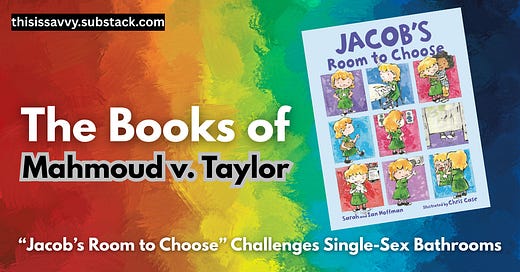




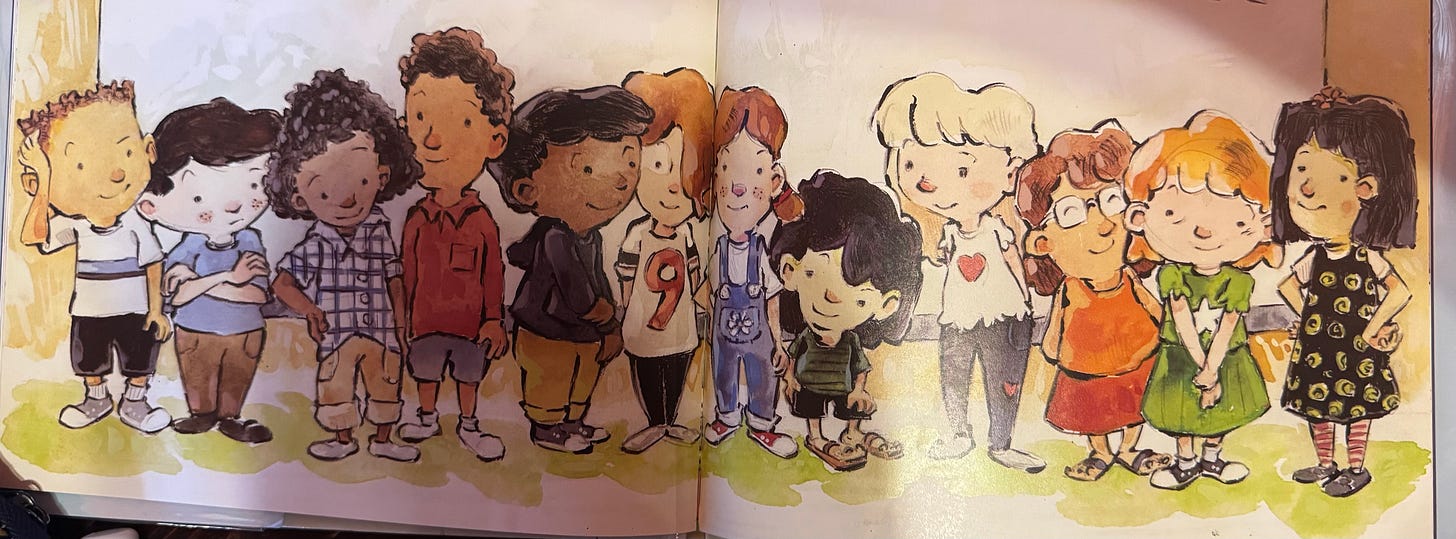
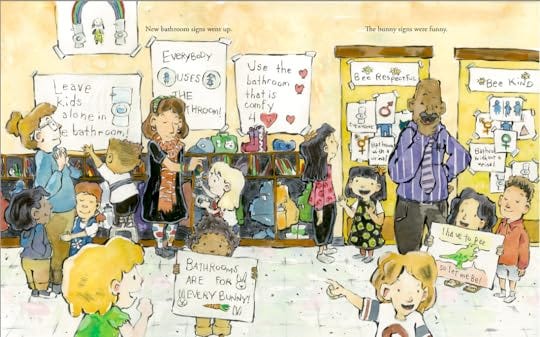
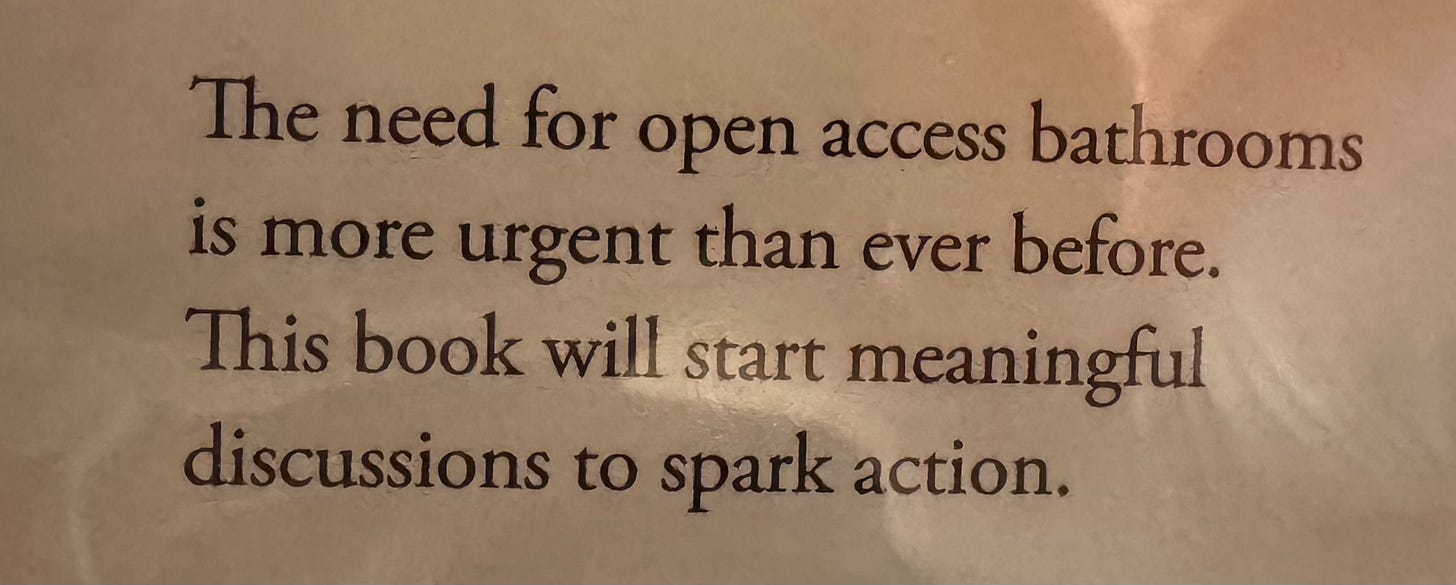

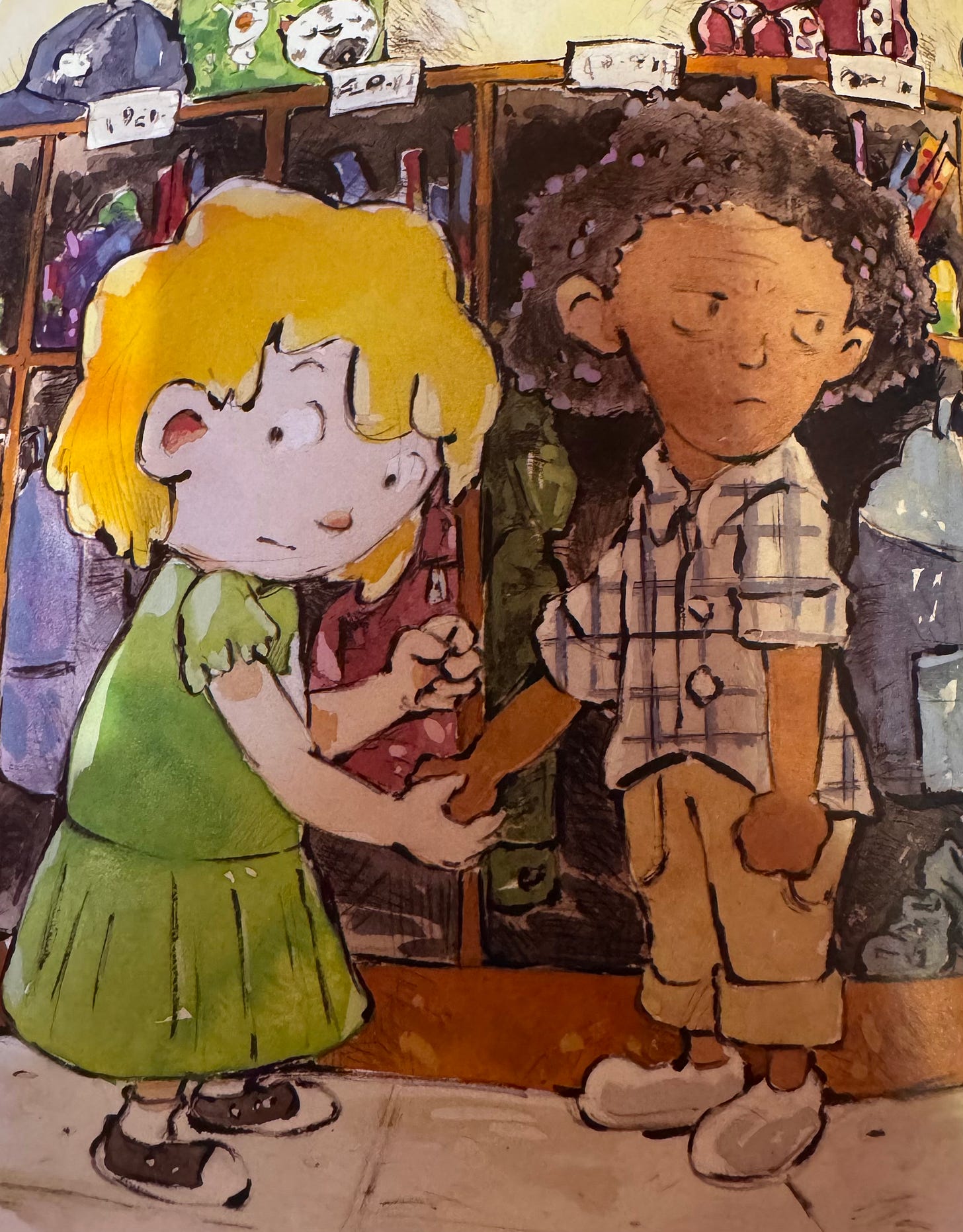
I concur with your assessment of this book. Children are poorly served by those who lead them to repudiate their personal biological reality and engage in behavior driven by the desire to exist in a delusion amounting to mental illness. No good comes of this and there is no credible evidence to support it.
Thank you for this clear explanation of what is so wrong with this whole movement! It’s far more tearing down norms than seeking resolutions.